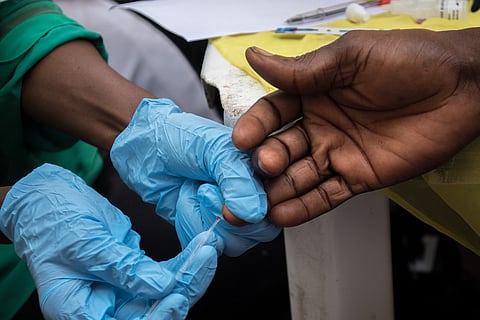Co-Morbidity of Malaria and Soil-Transmitted Helminths
Recent research has brought into light the simultaneous occurrence of malaria and soil-transmitted helminth (STH) infections in Nigeria. The study, led by Faith Eshofonie from the Federal University of Technology, demonstrated regional disparities in co-infection rates. The south-south and southeast regions reported higher rates, while the northwest showed lower co-morbidity despite a higher prevalence of malaria. This situation calls for integrated health strategies that encompass education, hygiene practices, and regular health screenings.
About Soil-Transmitted Helminths
Soil-transmitted helminths are parasitic worms that infect approximately 1.5 billion people globally. They thrive in tropical and subtropical regions, particularly in communities lacking access to clean water and sanitation. Major species include Ascaris lumbricoides (roundworm), Trichuris trichiura (whipworm), and hookworms (Necator americanus and Ancylostoma duodenale). These infections primarily spread through contaminated soil and faeces.
Transmission Mechanisms
STH infections occur when eggs are ingested from contaminated soil or water. Poor sanitation facilitates the spread of these eggs. Hookworms can penetrate the skin directly, typically when individuals walk barefoot on contaminated soil. The absence of direct person-to-person transmission means that infection relies on environmental exposure.
Nutritional Impact of STH Infections
STH infections adversely affect nutritional status. The worms consume host tissues, leading to iron and protein loss. Hookworms can cause chronic blood loss, resulting in anaemia, particularly among women and adolescents. Other consequences include malabsorption of nutrients and loss of appetite, further exacerbating malnutrition.
Symptoms and Morbidity
The severity of symptoms correlates with the intensity of infection. Mild infections often present no symptoms, while heavier infections can cause abdominal pain, diarrhoea, and malnutrition. Severe cases might lead to intestinal obstruction, requiring surgical intervention. S. stercoralis can cause severe complications, especially in immunocompromised individuals.
WHO Strategies for Control
The World Health Organization (WHO) advocates for periodic treatment of at-risk populations in endemic areas. This includes preschool and school-age children, women of reproductive age, and adults in high-risk jobs. Preventive chemotherapy aims to reduce morbidity by lowering worm burdens. Health education and improved sanitation are also crucial components of effective disease management.
Regional Disparities in Nigeria
The study revealed that malaria prevalence is highest in the northwest and north-central regions, while STH infections are more widespread in the southwest. Climatic factors such as temperature and precipitation influence disease distribution. Effective health interventions vary across regions, necessitating tailored public health strategies.
Climate Change and Disease Management
Climate change poses additional challenges for managing malaria and STH infections. Temperature increases can enhance malaria transmission, while sanitation conditions remain critical for STH prevalence. The study advocates for climate-aware strategies that integrate health initiatives with environmental considerations.
Month: Current Affairs - April, 2025
Category: Reports & Indexes Current Affairs








